After 27 rounds, FC Seoul are sixth in the K League 1, having achieved 12 wins, six draws, and nine losses — this is only an eight-point difference from Gangwon, who is in first place.
On the defensive level, FC Seoul’s statistics are good; they are considered to have the third-strongest defence, tied with Pohang Steelers; they have conceded 31 goals — only two goals more than the team with the strongest defence, Ulsan Hyundai.
On the offensive level, their statistics are excellent.
They have the second-strongest attack, with a total of 42 goals, trailing by nine behind the leader, Gangwon.
In this tactical analysis, we will discuss one of the reasons behind their offensive success: set-pieces, particularly their tactics in attacking corners.
They are the team with the highest number of goals scored from corners in the K League 1, with a total of six.
Far Starting Positions
Before getting deeper into the details, an important thing you should know about Seoul is that they use simple ideas in many different ways to make them effective, and they are not easy to predict, even if they use similar main ideas.
The first strategy we will discuss is asking the targeted player, usually Kwon Wan-kyu, to start in a far position on the edge of the box, far away from man markers, so he can be free with the help of his teammate, who fakes a run to drag the defender, as shown below.
During that, a pack of attackers starts near the penalty spot, which will be the targeted area.
Then, he goes to different ways to drag the markers away to free the targeted area for the unmarked player from a far position.
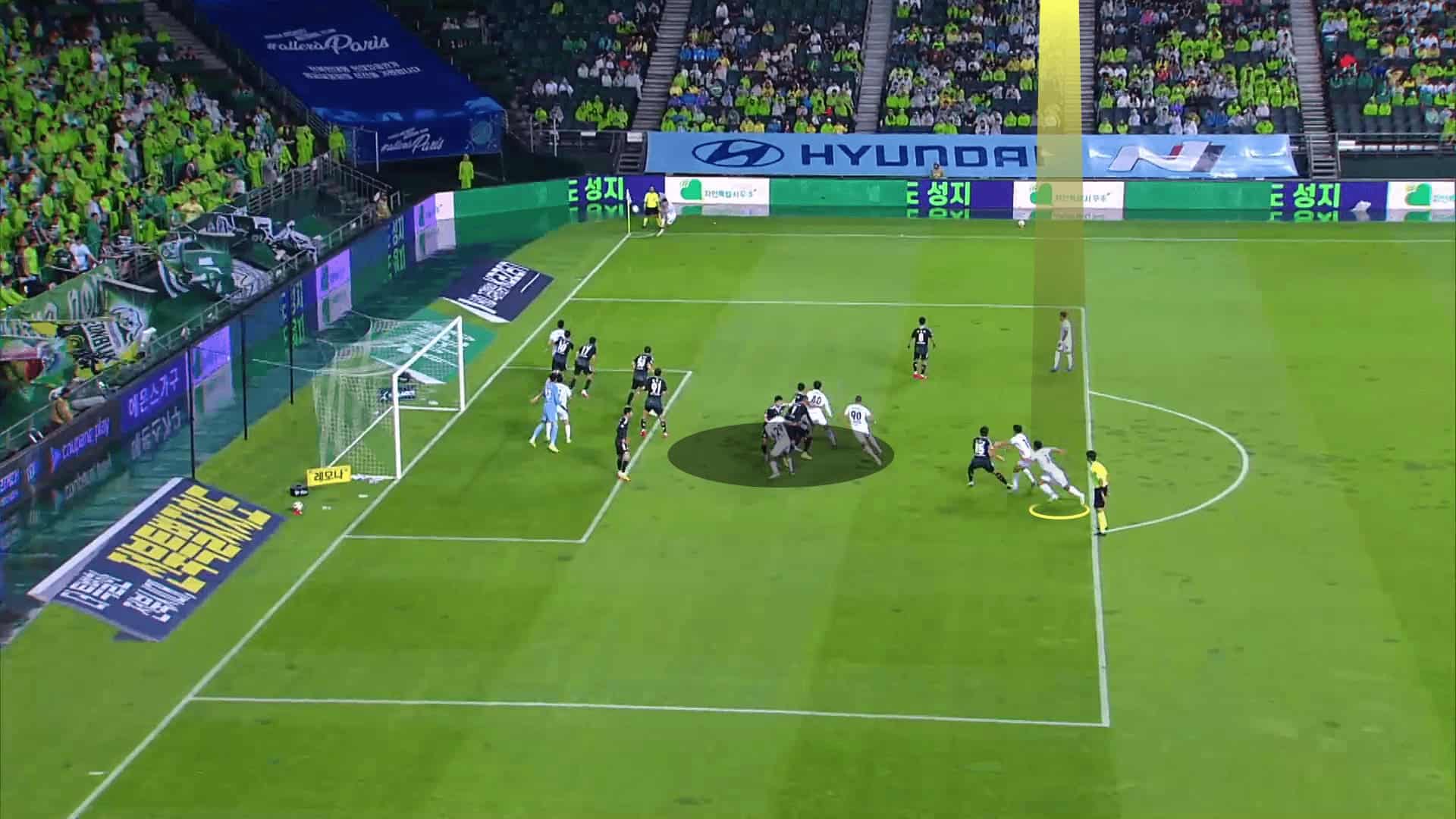
To do all of these steps, they need the cross to take a long time in the air, so they want the cross to be floated.
This also helps the targeted player run enough distance and jump with his dynamic mismatch, getting the ball from the highest point, showing his ability in aerial duels.
The cross is also an out-swinger to be further from the zonal defender, landing at the targeted area.
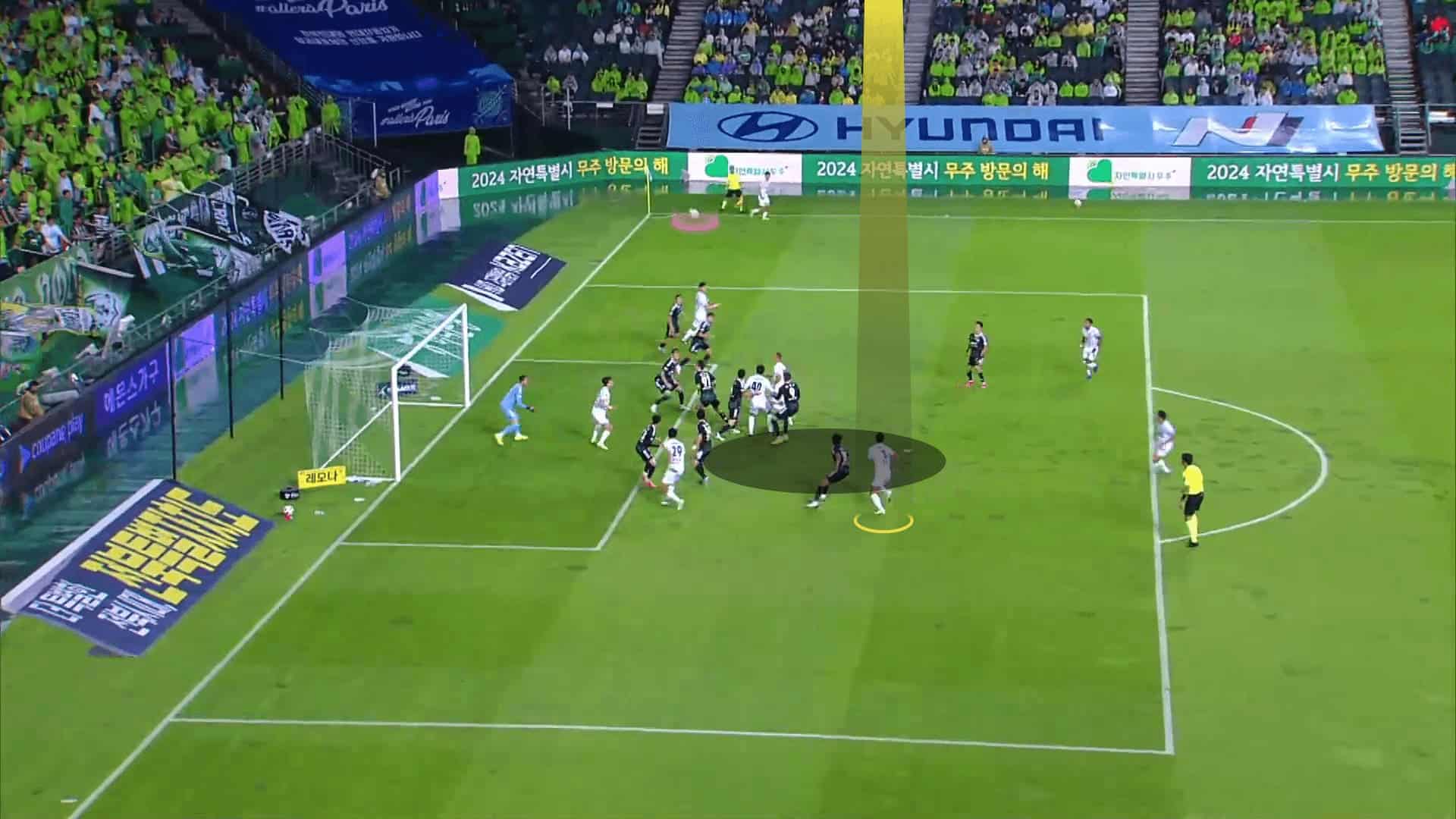
The plan works, and the result is a goal, as shown below.
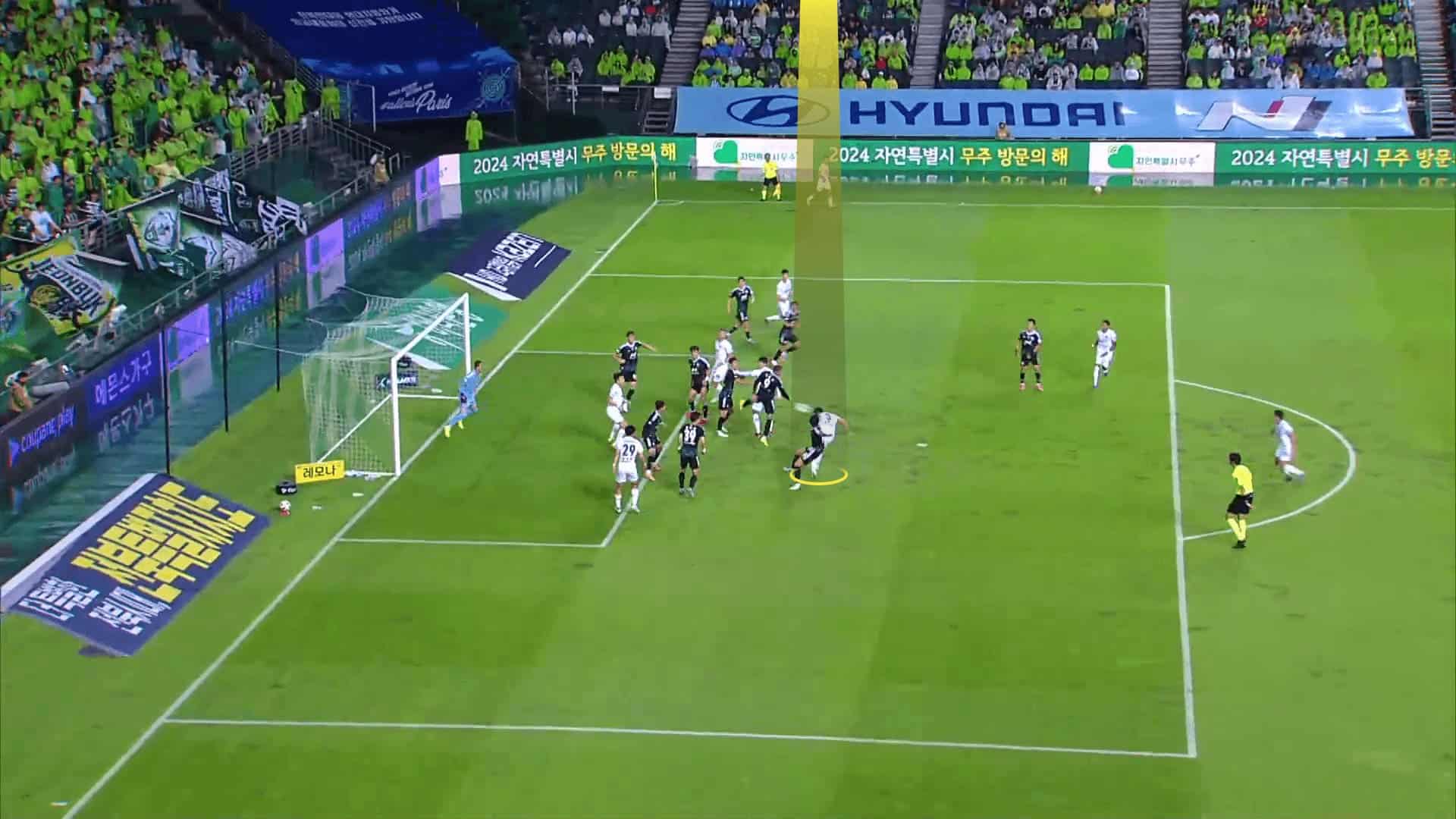
It would be easy if the opponent asked a marker to go forward and pick him up from the beginning.
In the case below, a man marker is asked to go up chasing Kwon Wan-kyu from the beginning, but let’s see how he can get to the targeted area on the far post.
An attacker is asked to initially stand with the goalkeeper to distract him, preventing him from claiming the ball before reaching the targeted area.
Asking the man marker to go up in that far position makes it difficult for him to keep tracking the ball and the targeted player at the same time.
You can see that he gives his back to the ball, which means that he will turn around and lose communication with either the ball or the targeted player, which is called an orientation problem.
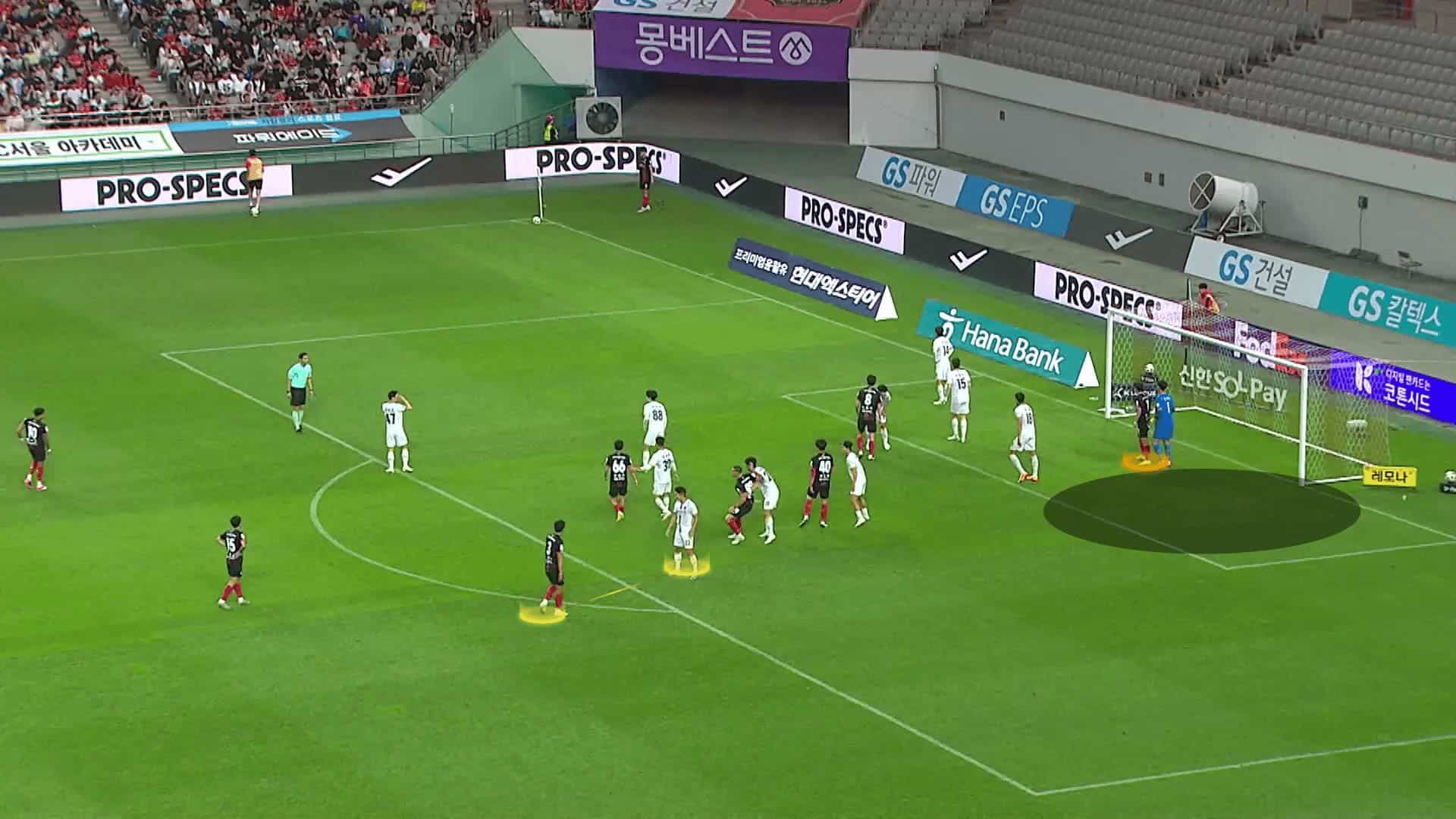
That becomes clear below when he turns around to look at the ball, so he loses communication with the attacker at that moment.
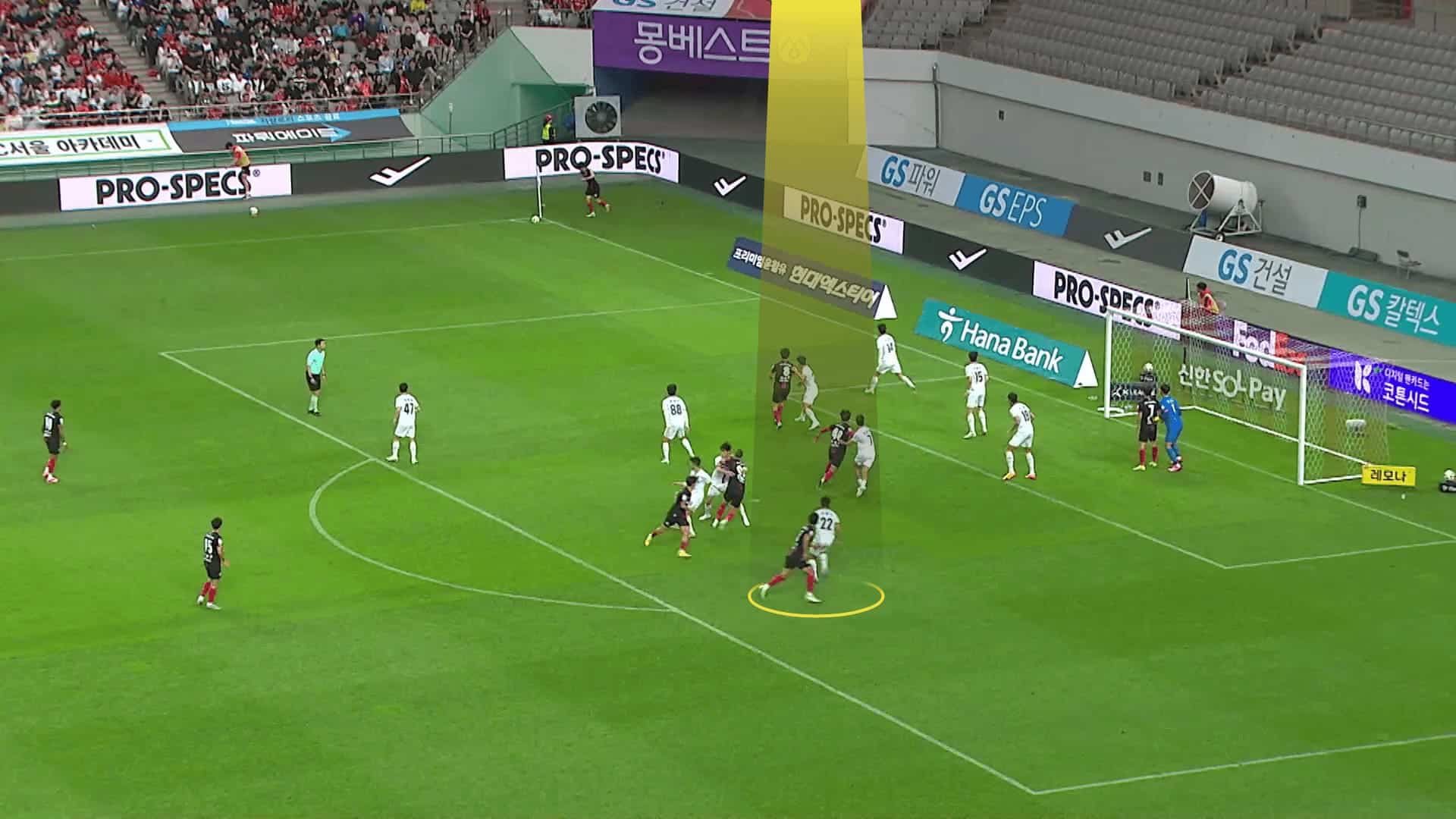
The plan works, and the result is a goal, as shown in the two photos below.
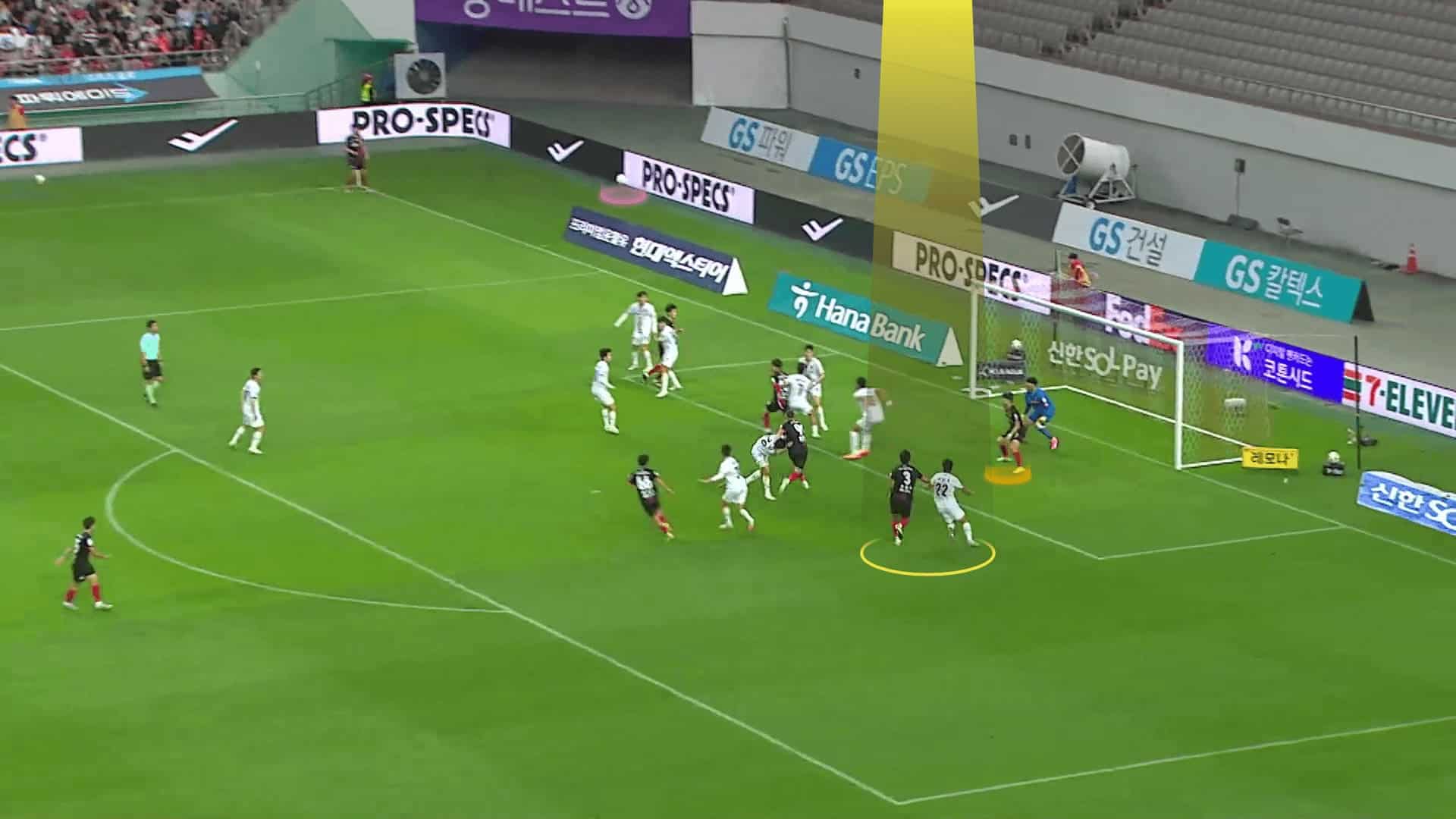
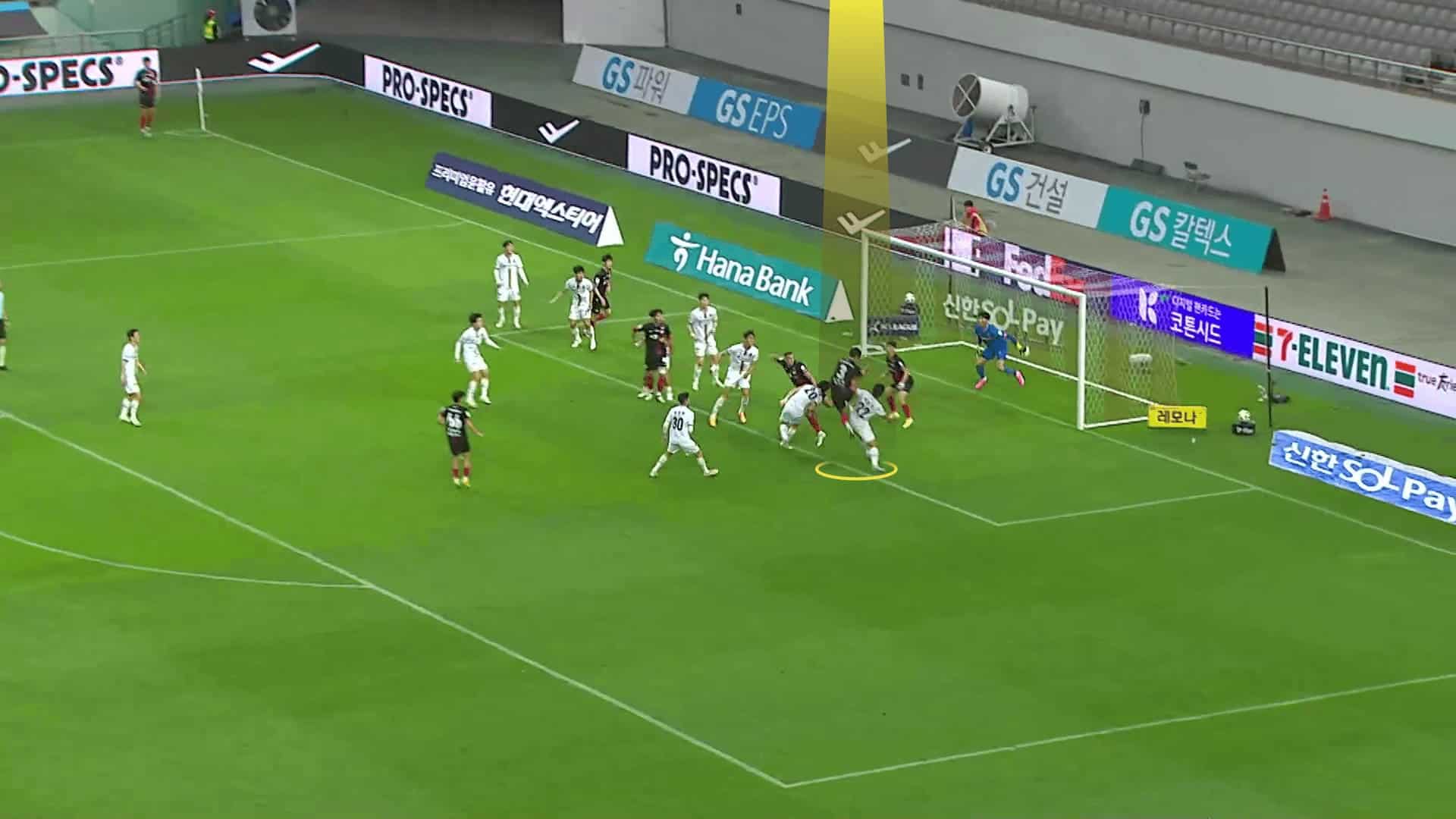
They have many diverse helping ideas trying to make this idea effective, so they used stacks and underloading in the photo below.
In the photo below, four attackers start in the targeted area in a stack, back to back, while the targeted player is the last one in the stack.
These attackers will start moving in different directions to evacuate the targeted area for the staying targeted player while also distracting the existing man markers far away from the target player, called underloading.
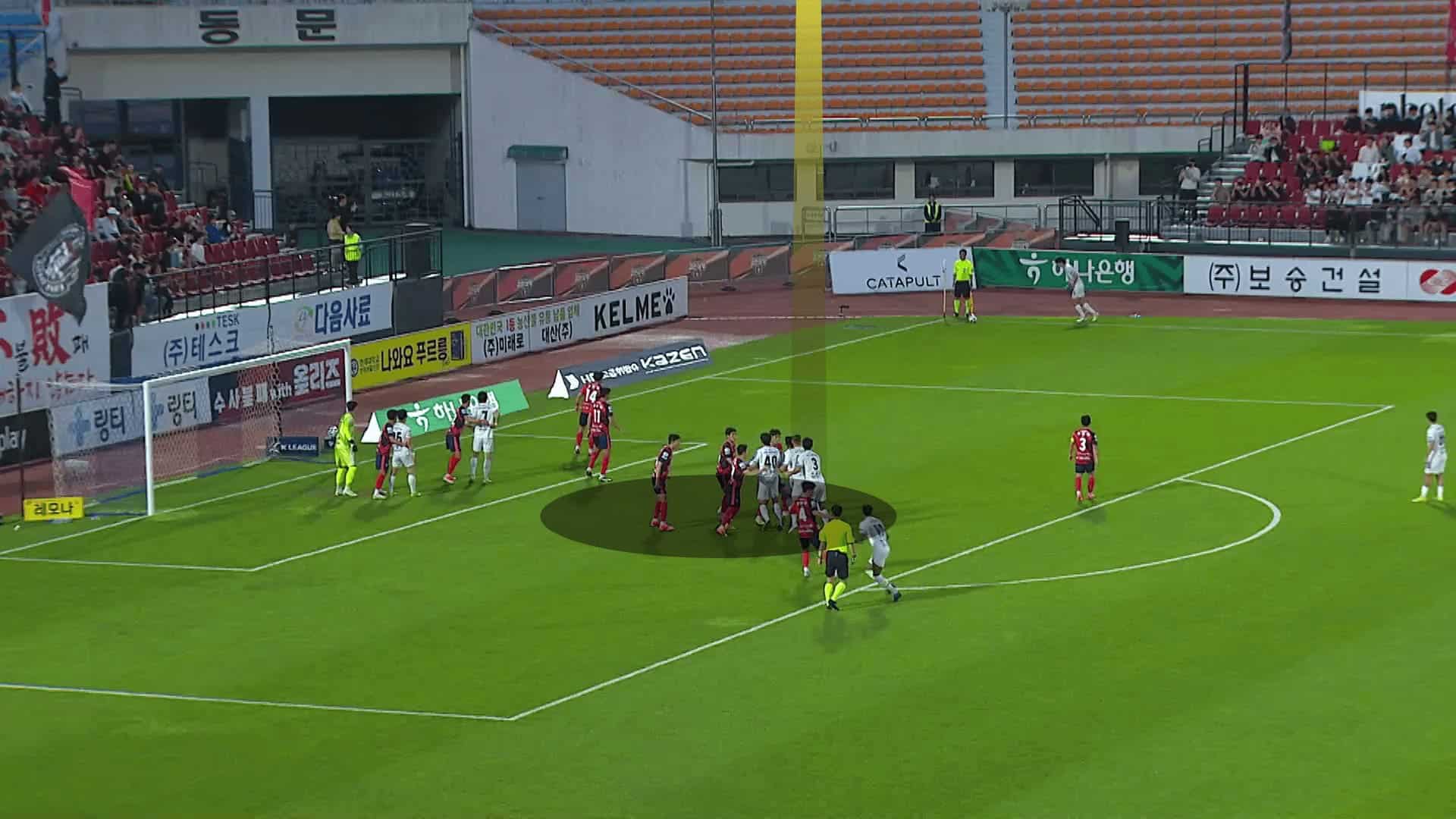
These movements evacuate the targeted area and distract the man markers, separating the targeted player from the nearer marker.
This gives him enough distance to run before jumping, making him unstoppable.
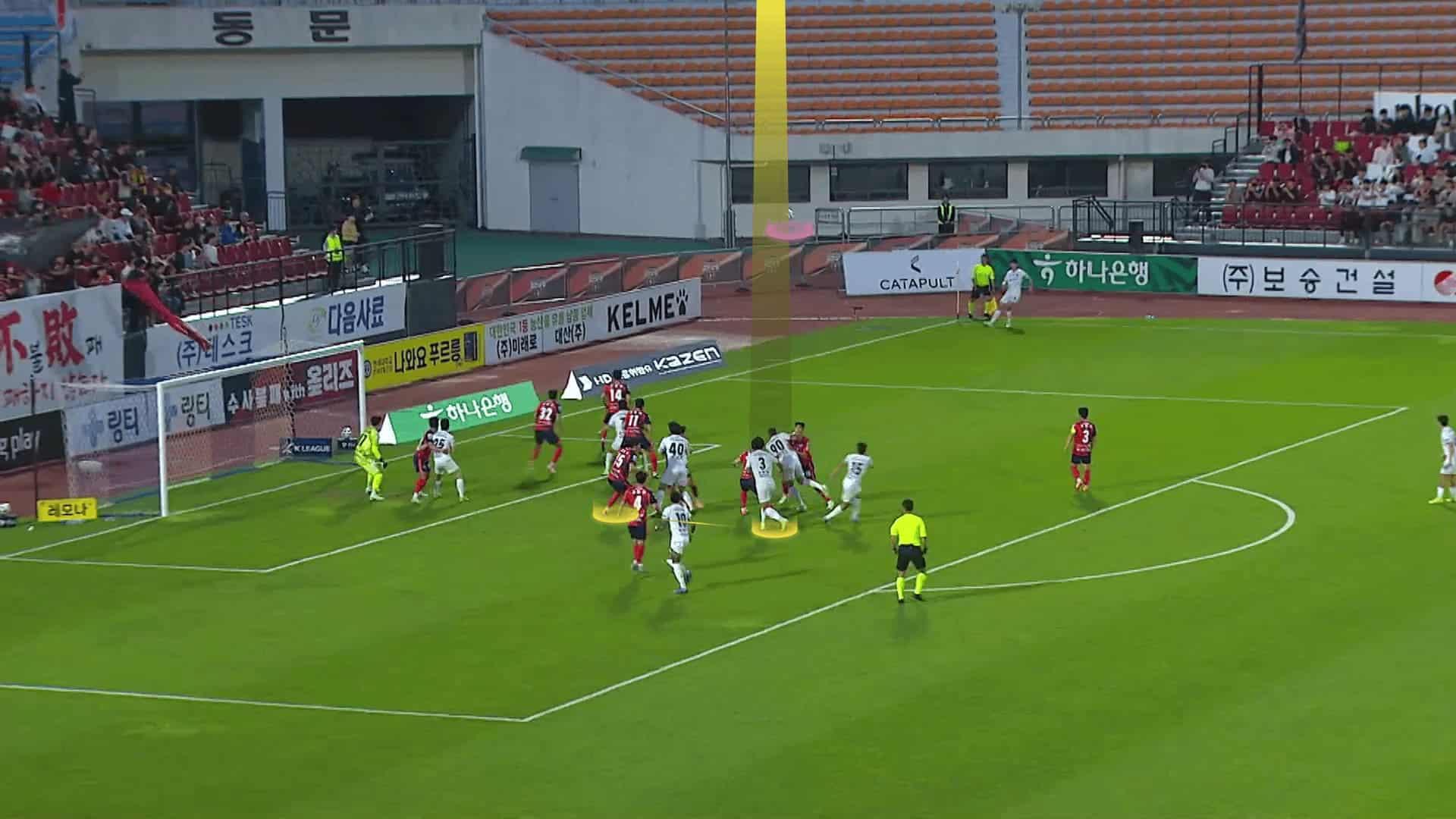
The plan works, but the goalkeeper saves the ball because the targeted area is a bit far, as shown in the two photos below.
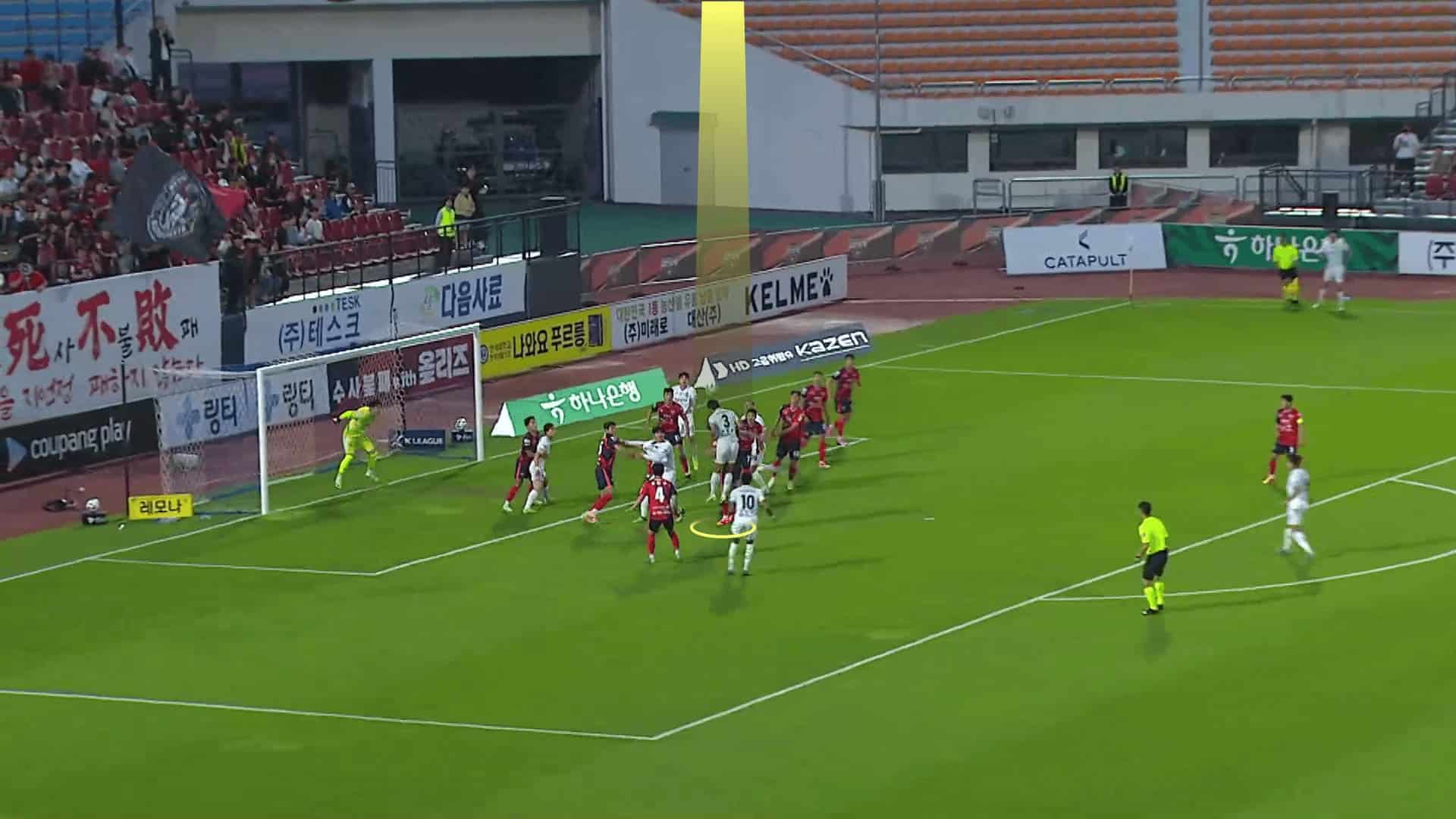
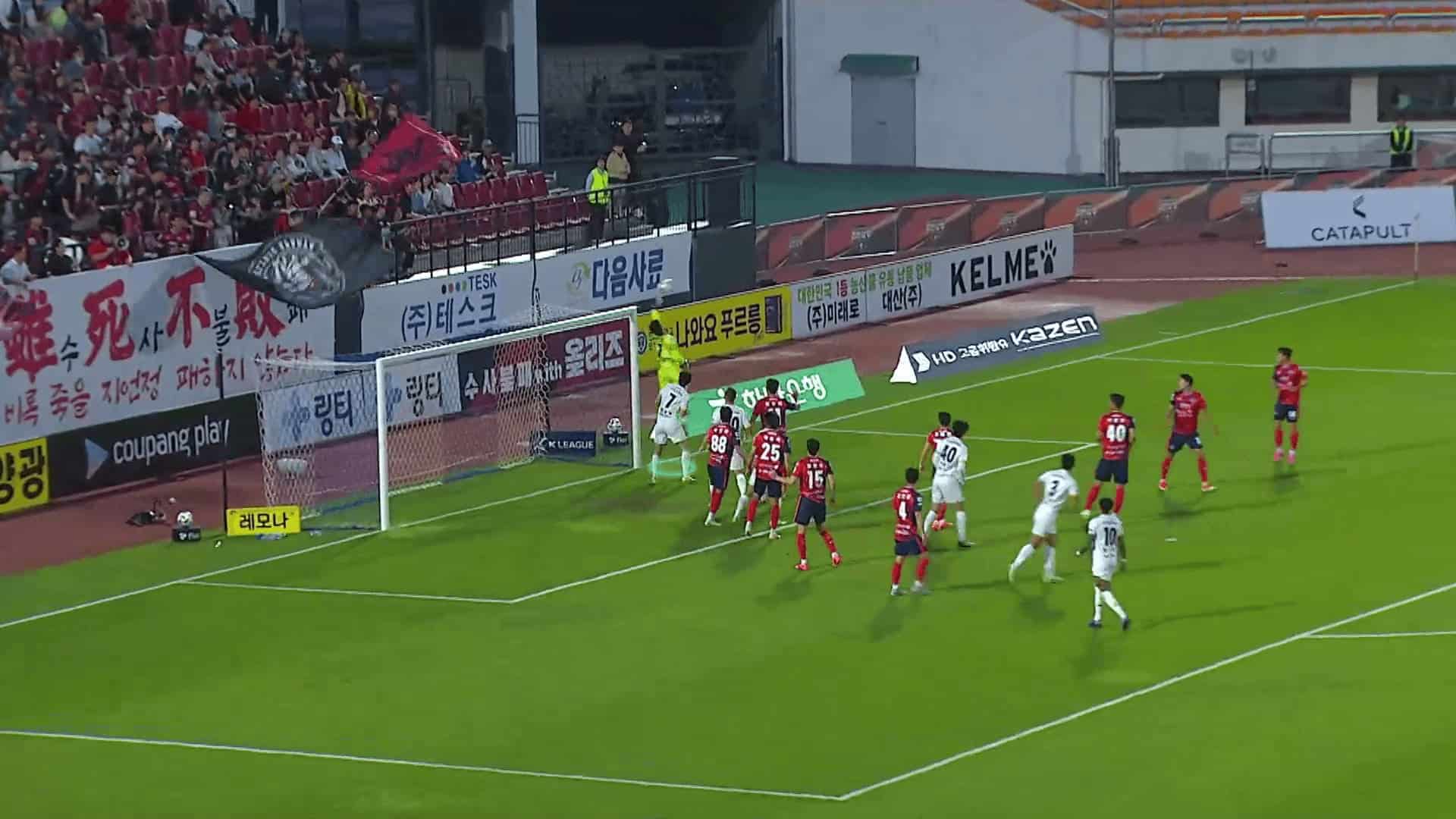
Deceptive Runs
They have a good combined idea to make the stack more effective, which is trying to target nearer areas by creating a gap between two zonal defenders, which will be targeted by the same free targeted player using the same usual stack—but how?
They use deceptive runs to the area before the near post to drag the first two zonal defenders, widening the gap between them and the second and third zonal defenders.
In the photo below, the last player in the stack will reach the targeted area before his marker by the same separation method using a stack.
In contrast, the two orange-highlighted players do receptive runs to drag the first two zonal defenders a little forward.
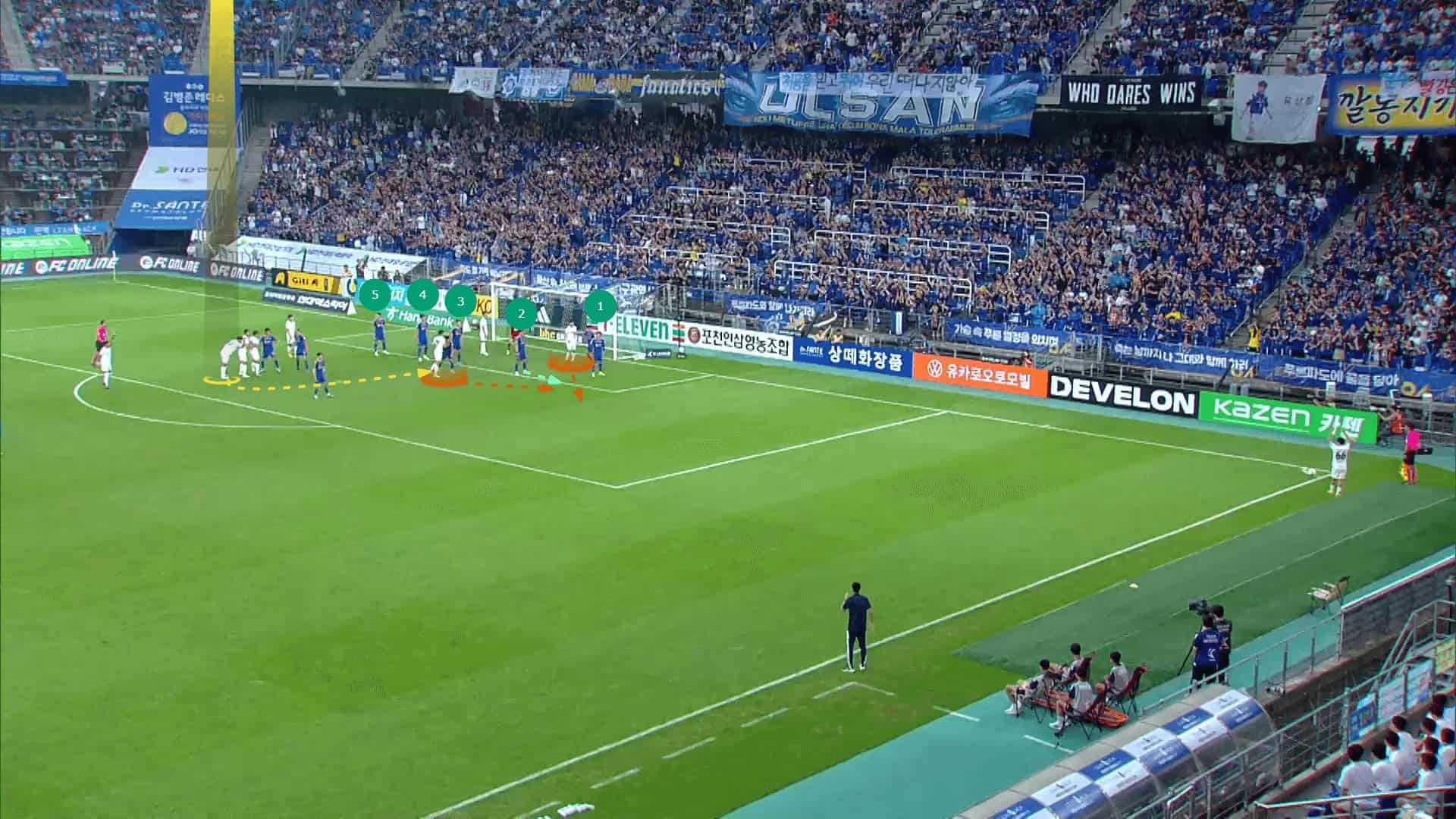
This increases the area between the second and third zonal defenders, creating a gap that the targeted player can exploit, as shown below.
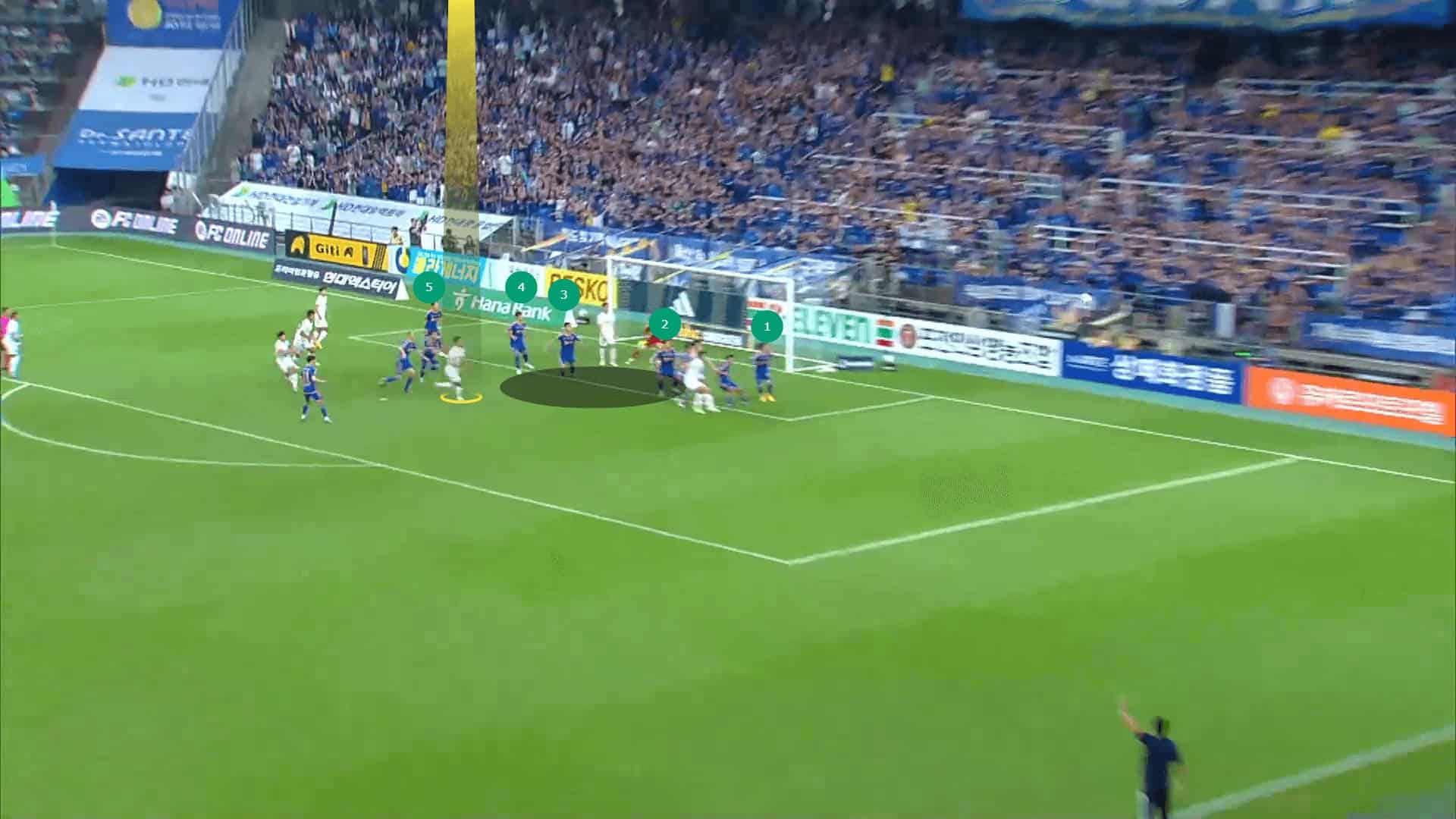
Unfortunately, the plan works, but the ball passes the targeted player, as shown below.
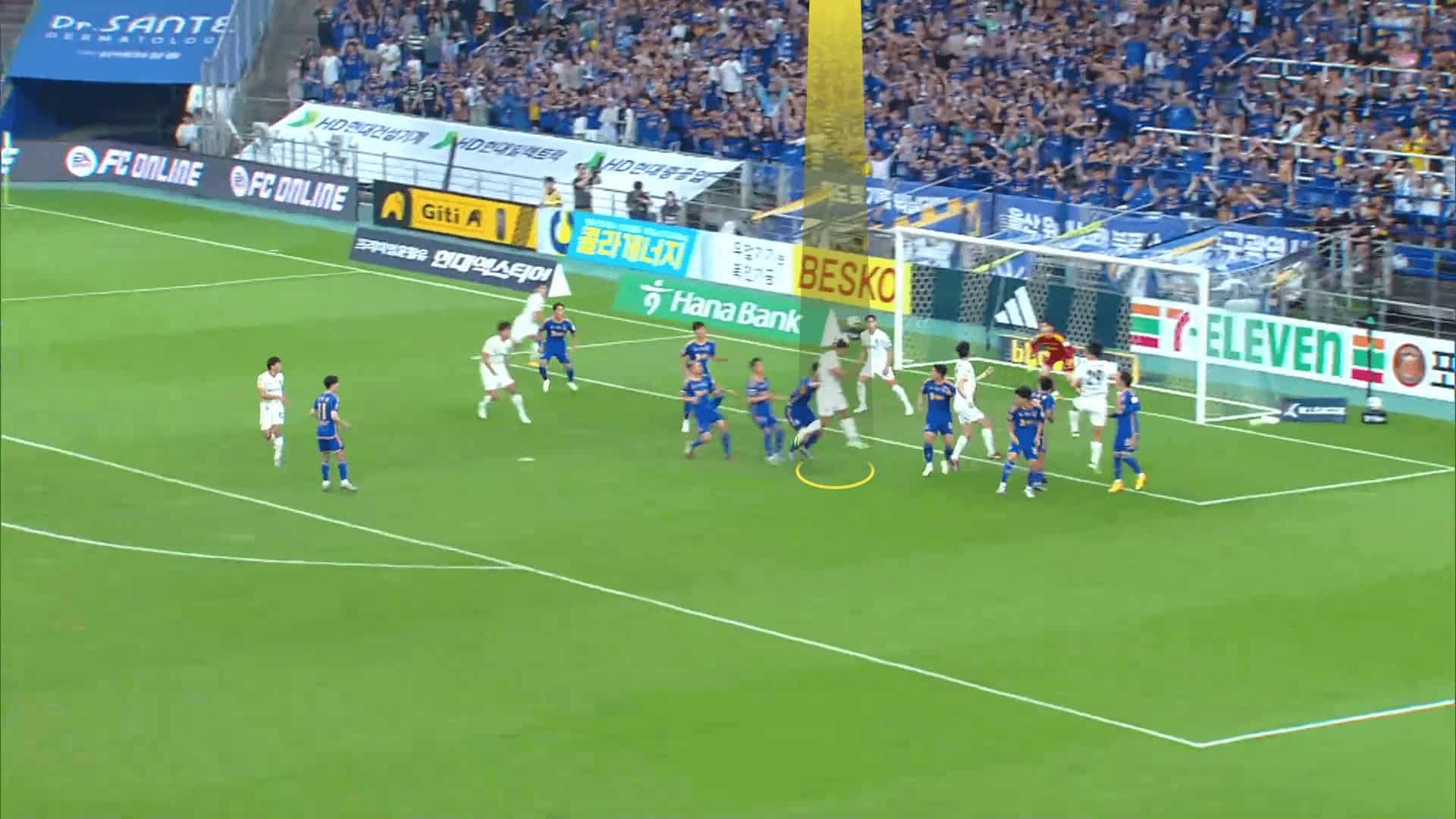
In the photo below, a similar idea was implemented by making a variation that targets the second stack.
Let’s see the details!
The orange attacker starts from the blind side of the first two zonal defenders to make them more curious, taking their attention when he comes from their back, aiming to make them step a bit forward.
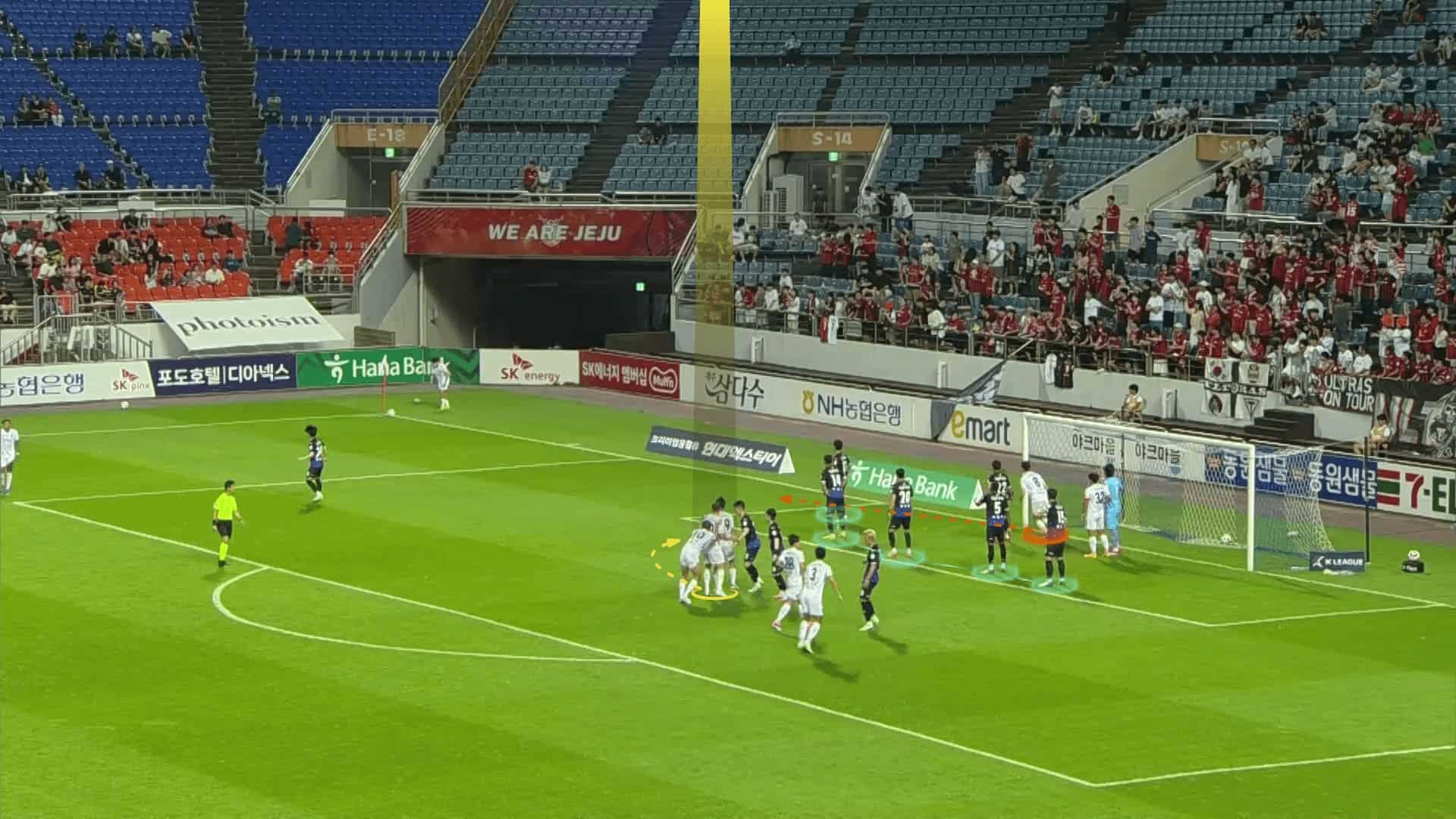
Coming to the stack again, this small separation allows a good attacker to earn enough momentum to run before jumping, making it difficult for the marker to match him.
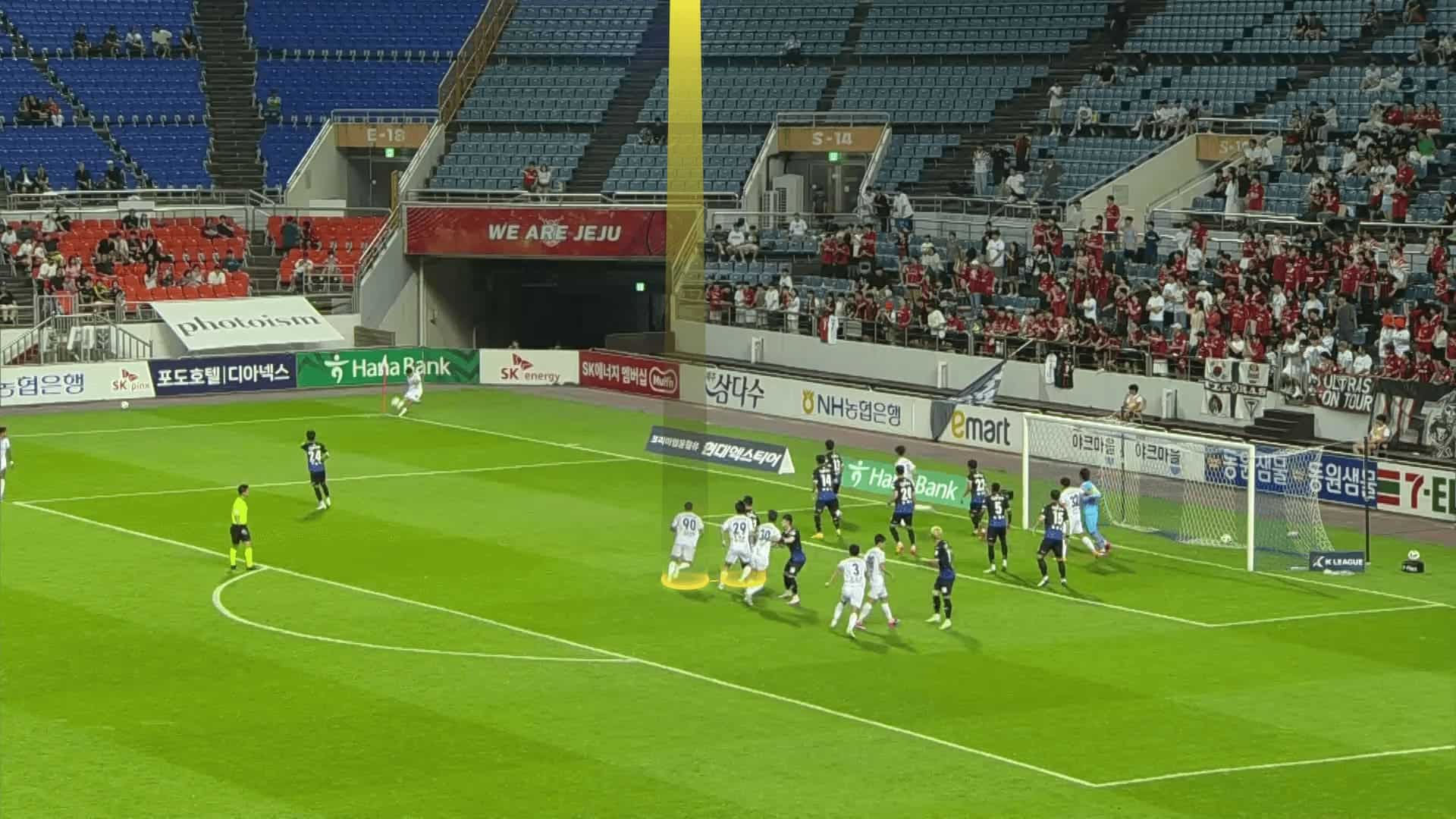
The targeted player reaches the created gap and waits for the ball, as shown below.
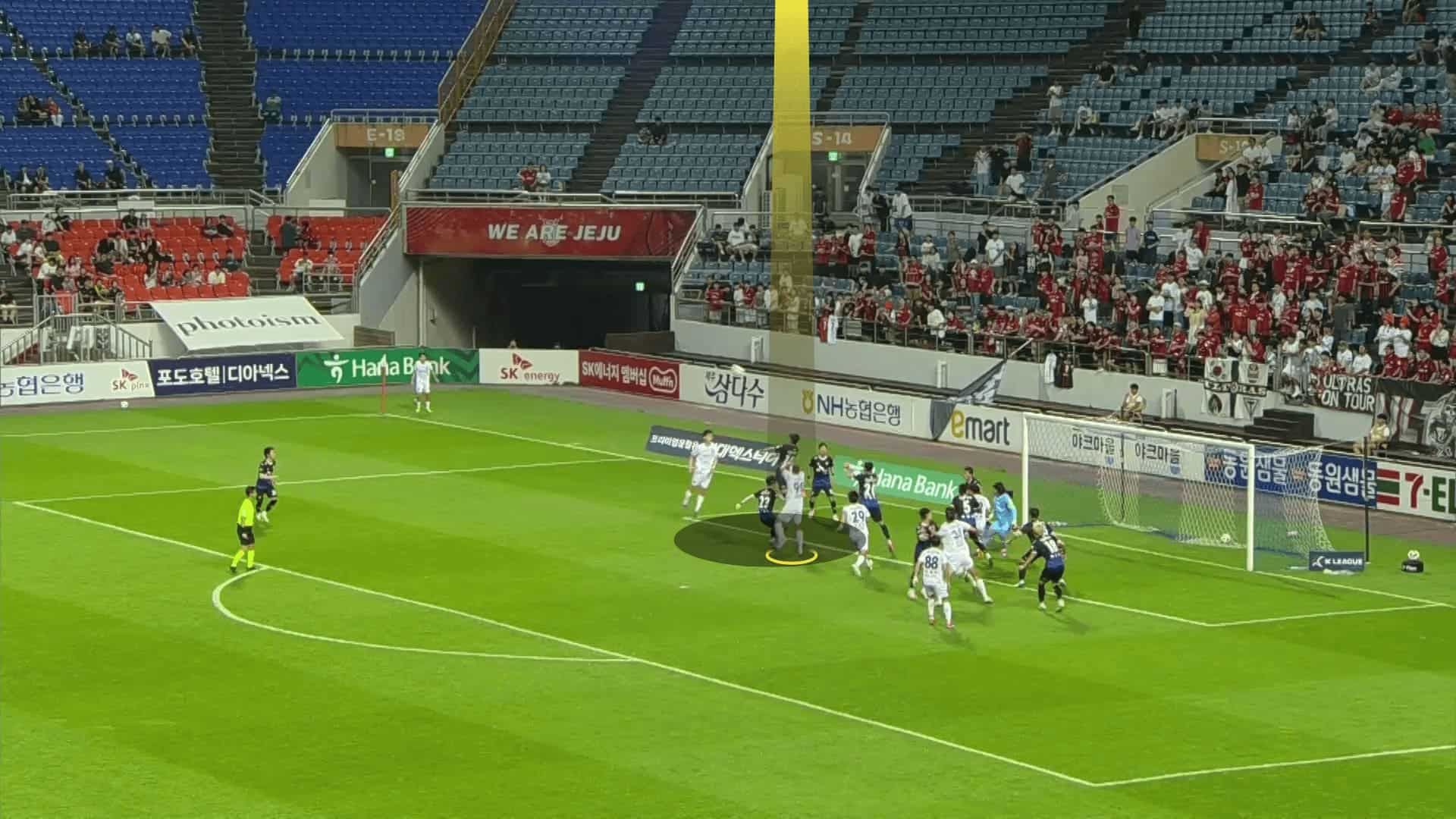
But the third zonal defender can adjust his position to get the ball, so we suggest using another attacker to block this defender or at least annoy him not to jump freely.
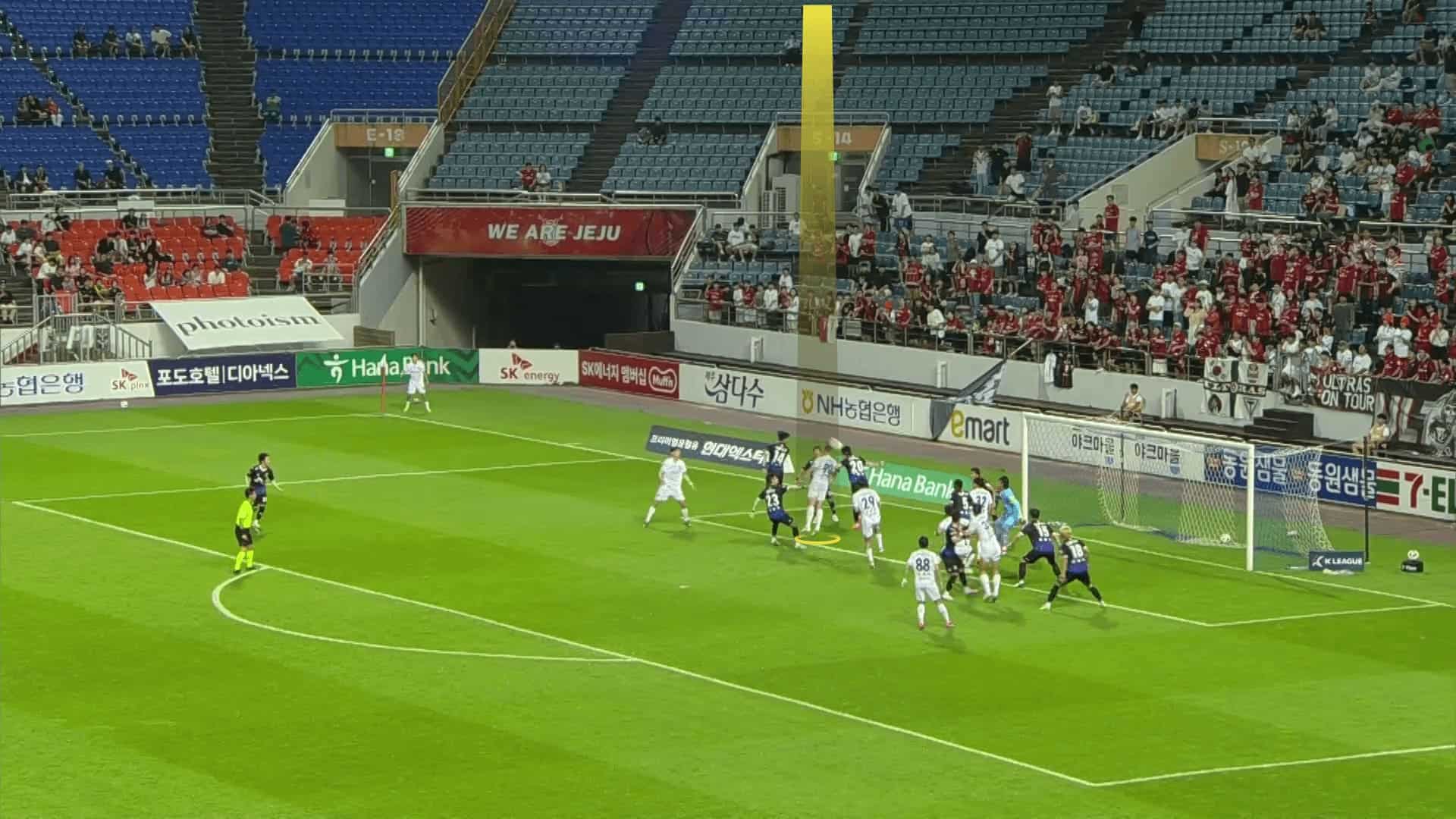
Targeting The Rebound Player
We all know now that variation has become an important principle in set-pieces on which teams try to depend not to be predicted easily, so FC Seoul try to find different ideas, but with the same headlines and ideas; let’s see an example.
In the photo below, the targeted player is a winger who starts naturally pretending that he is a rebound player, staying on the edge of the box on the edge of the box, but he will unexpectedly go to the targeted area with the help of the other attackers inside the box who distracts the man markers away from the targeted area.
You may ask a good question: Will this player threaten the ball with his heading?!
You’re right, but they know that, so he targets a far area from the zonal defenders, which makes him win the ball easily.
He doesn’t have to shoot the ball directly; he can only nod the ball into the six-yard line for the other awaited players.
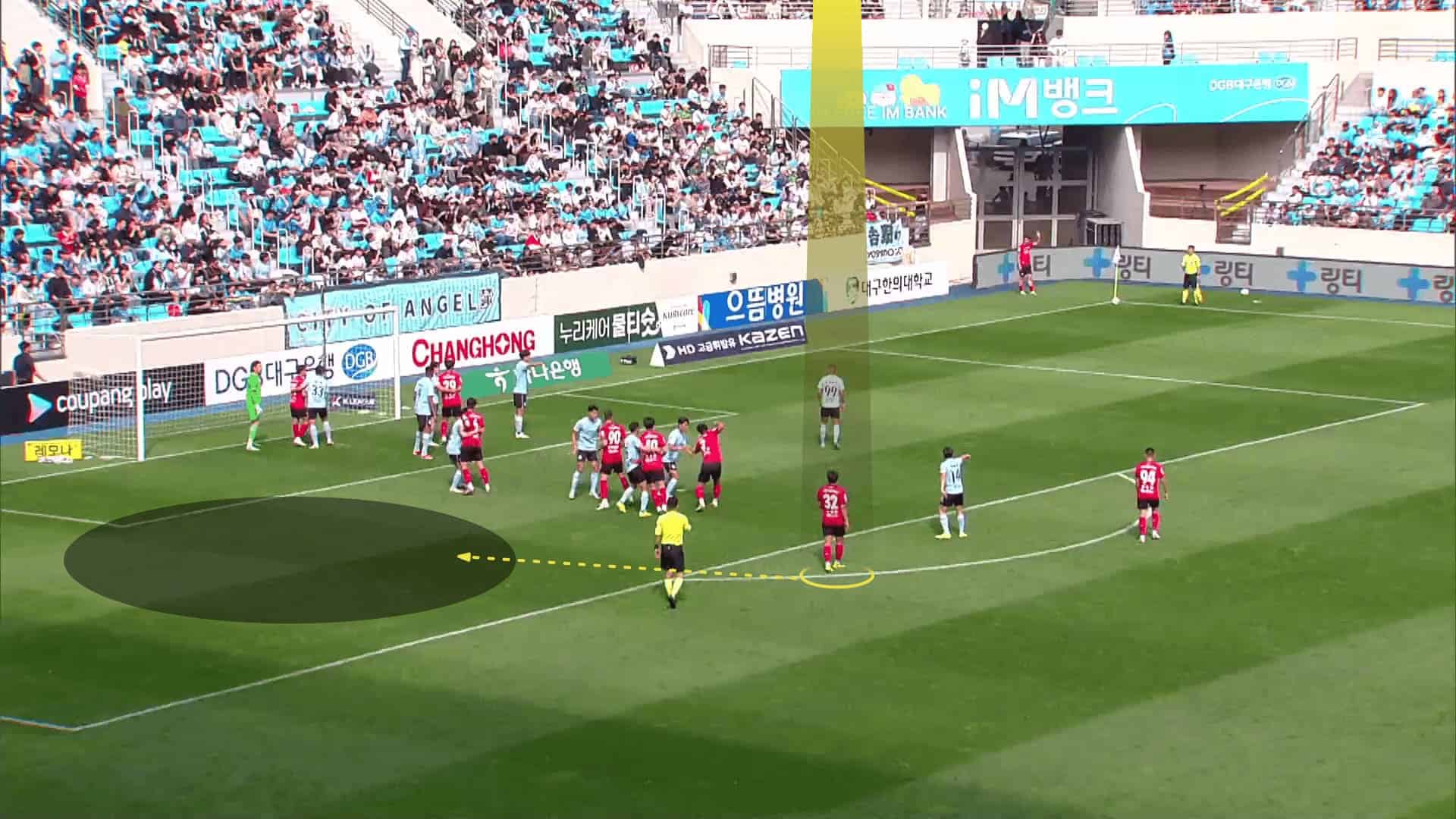
In the photo below, the runners make sure that their marker won’t leave them and go to the targeted zone after realizing the real targeted area from the path of the cross.
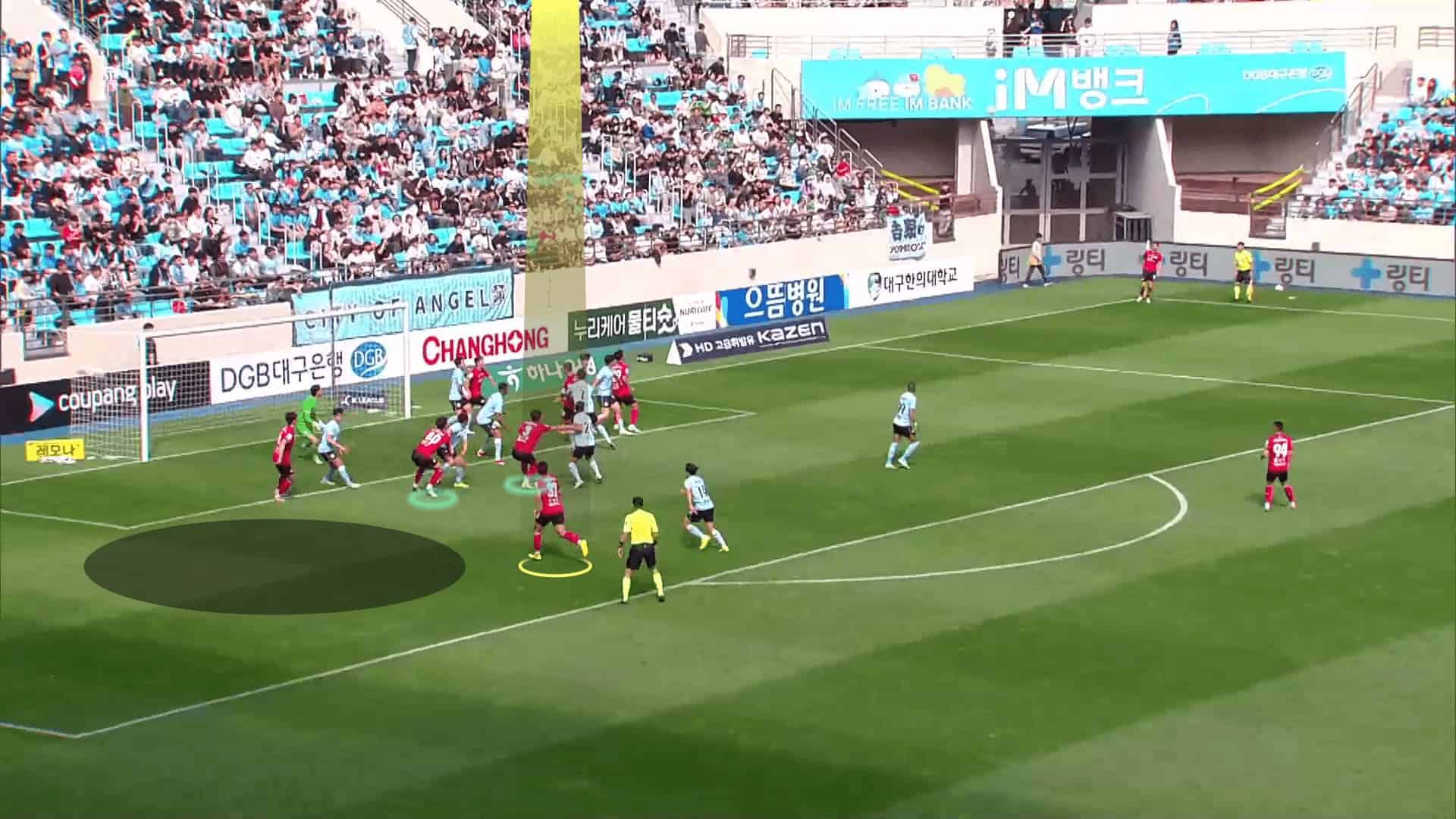
As shown below, the plan works while many players wait for the headed pass inside the six-yard.
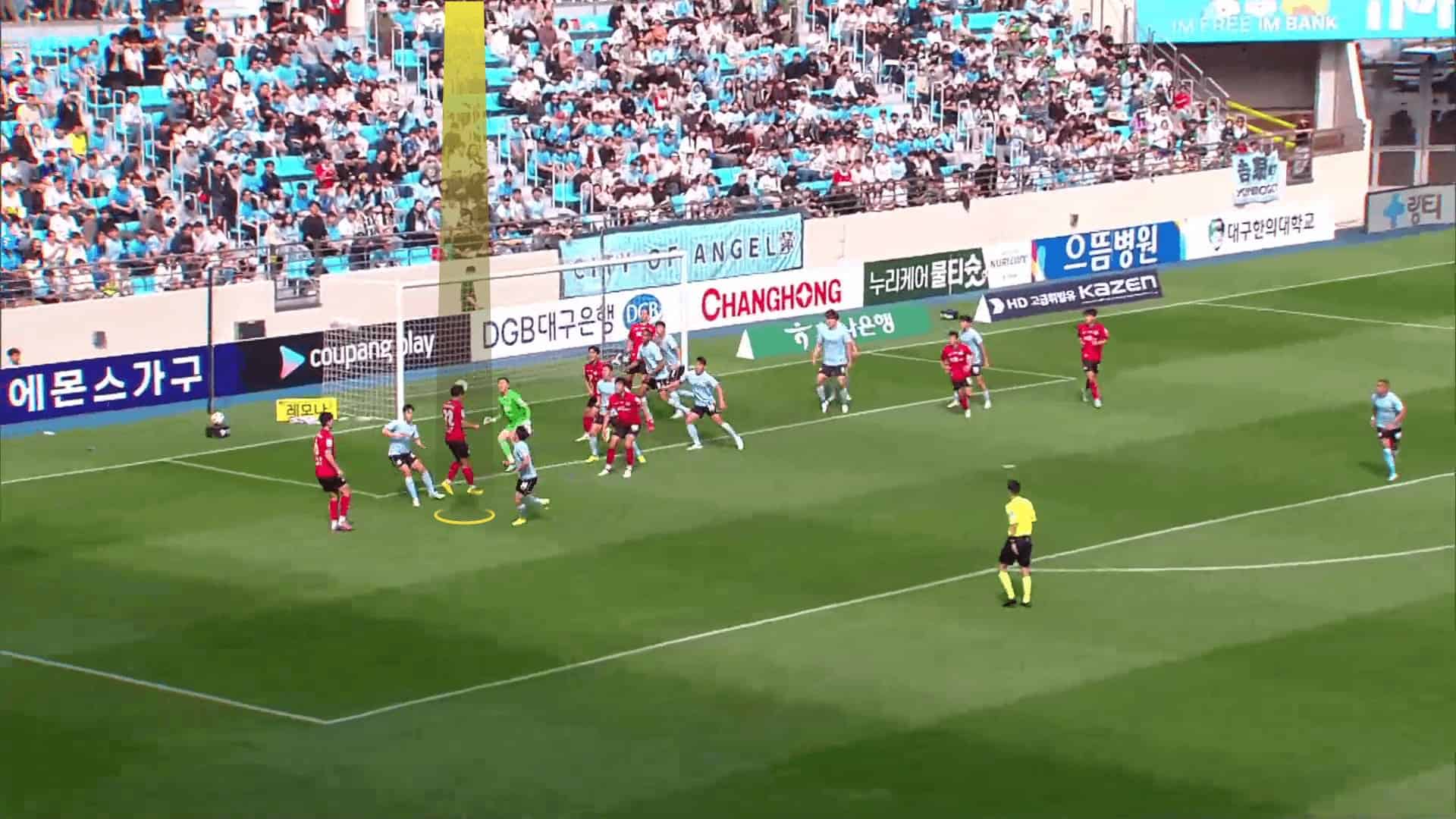
Short Corners
We can’t say that they care about variations without mentioning short corners, which have become a common and effective variation method in modern football.
In the photo below, they use the modern, trendy overlapping method, which asks the taker to pass the ball to a very near short-option attacker and then run behind him in a curved path. But why has overlapping become trendy in short corners?!
Asking the taker to overlap behind the short-option attacker has many advantages.
Usually, the defending teams start with only one short-option defender, so when the taker passes the ball and joins the game, it becomes a very quick two-versus-one situation, which means the short-option defender doesn’t have time until a second defender comes from the box, highlighted in green.
If the short option decides to track the taker, the short-option attacker will have his route free to the box and vice versa.
If the short-option defender stands with the short-option attacker, the taker will receive a pass in this enormous empty area, and that is what happens in this case.
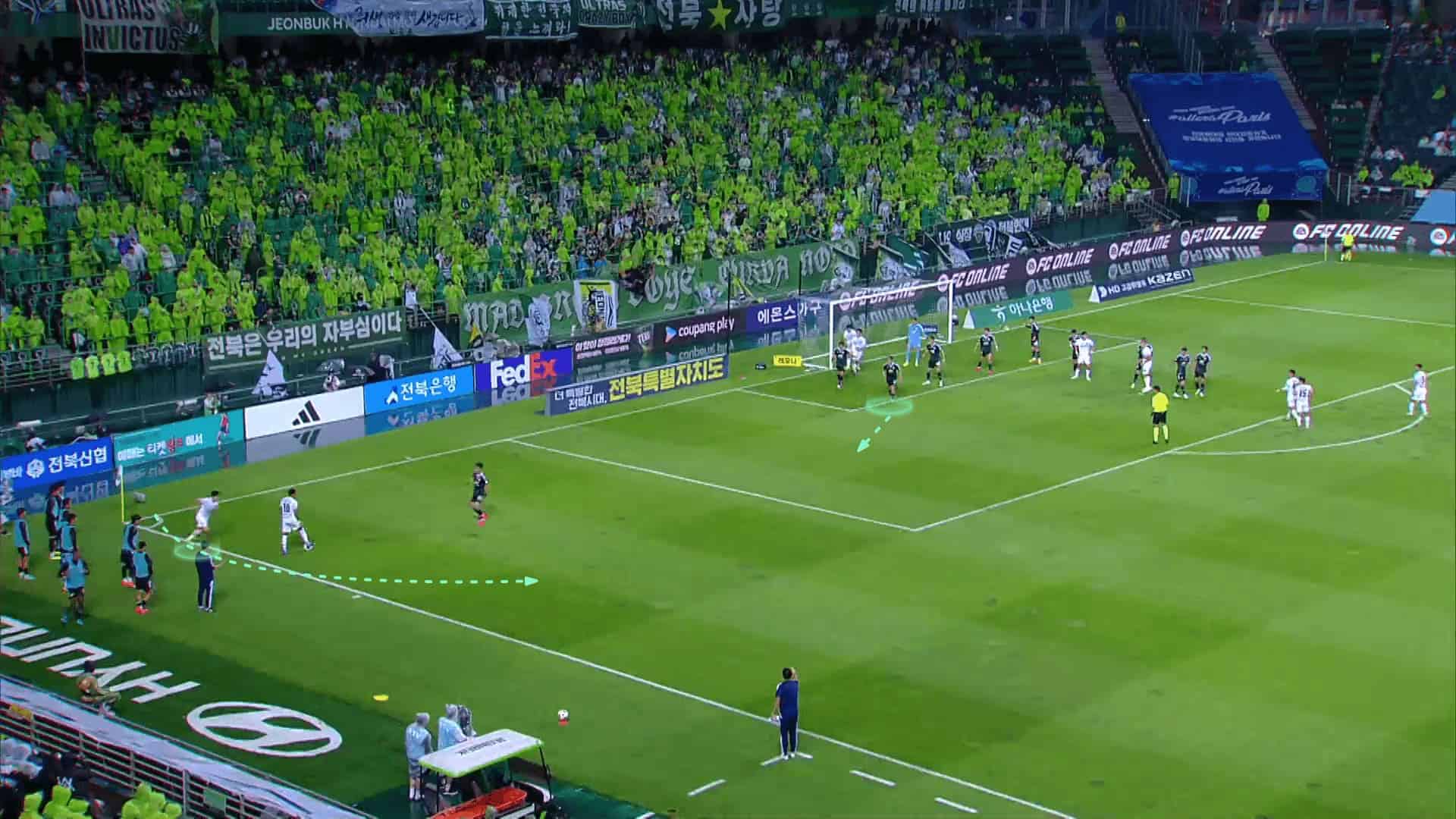
The taker has a free area to dribble more inside, and he can shoot, send a dangerous cross from such a near position or pass to the free player on the edge of the box with the help of a deceptive inside run from a mate standing next to him, and that is what happens, as shown below.
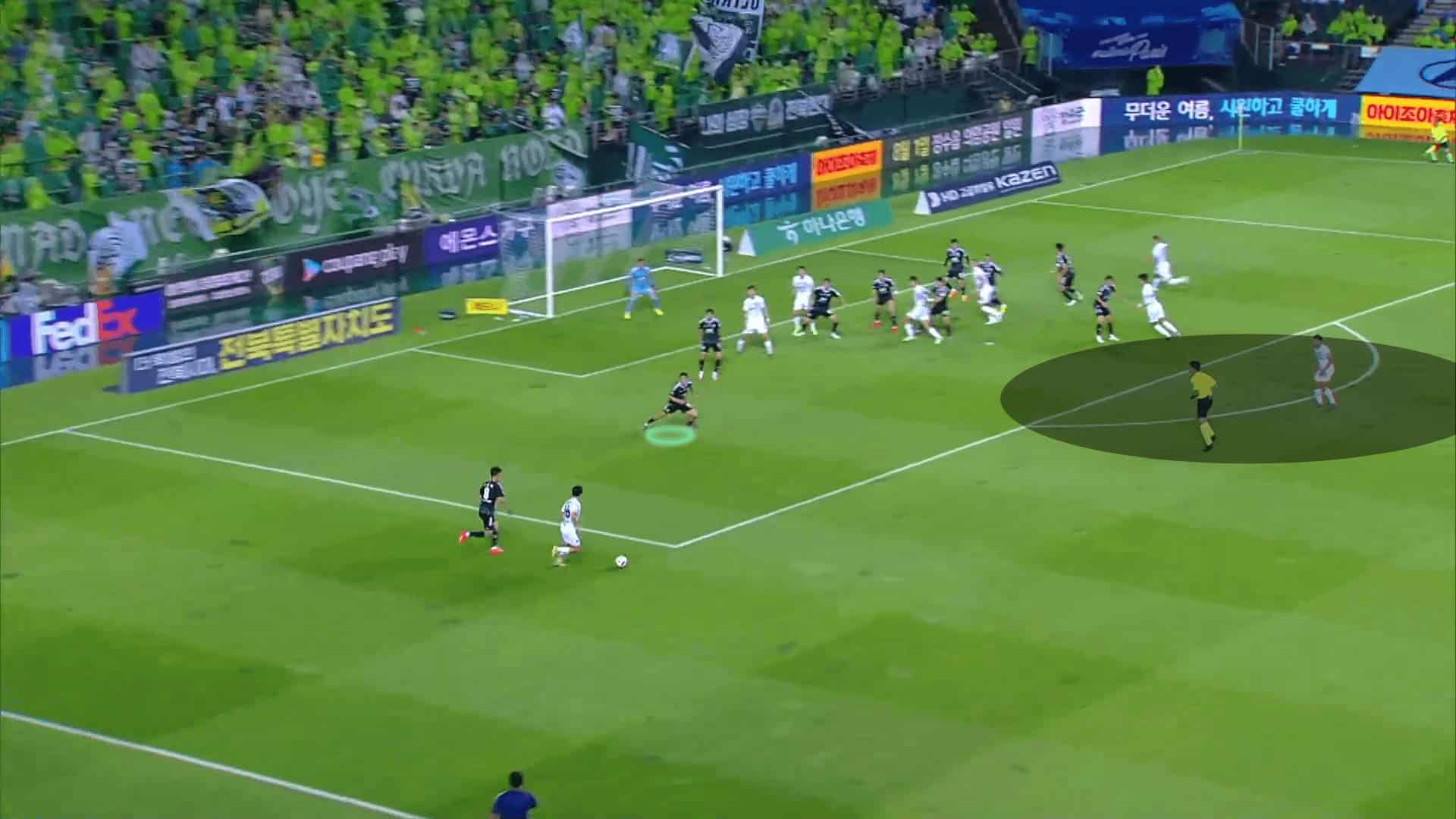
Conclusion
In this analysis, we have shown how FC Seoul exploit corner kicks to threaten the opponent’s goal with simple, but effective, ideas.
In this set-piece analysis, we have shown the isolation they did for the targeted player by floated out-swing crosses while also illustrating how they use deceptive runs to drag a zonal defender to create a gap between two zonal defenders.
We have also shown how they can even direct the rebound player and their good ability to use short corners.






Comments